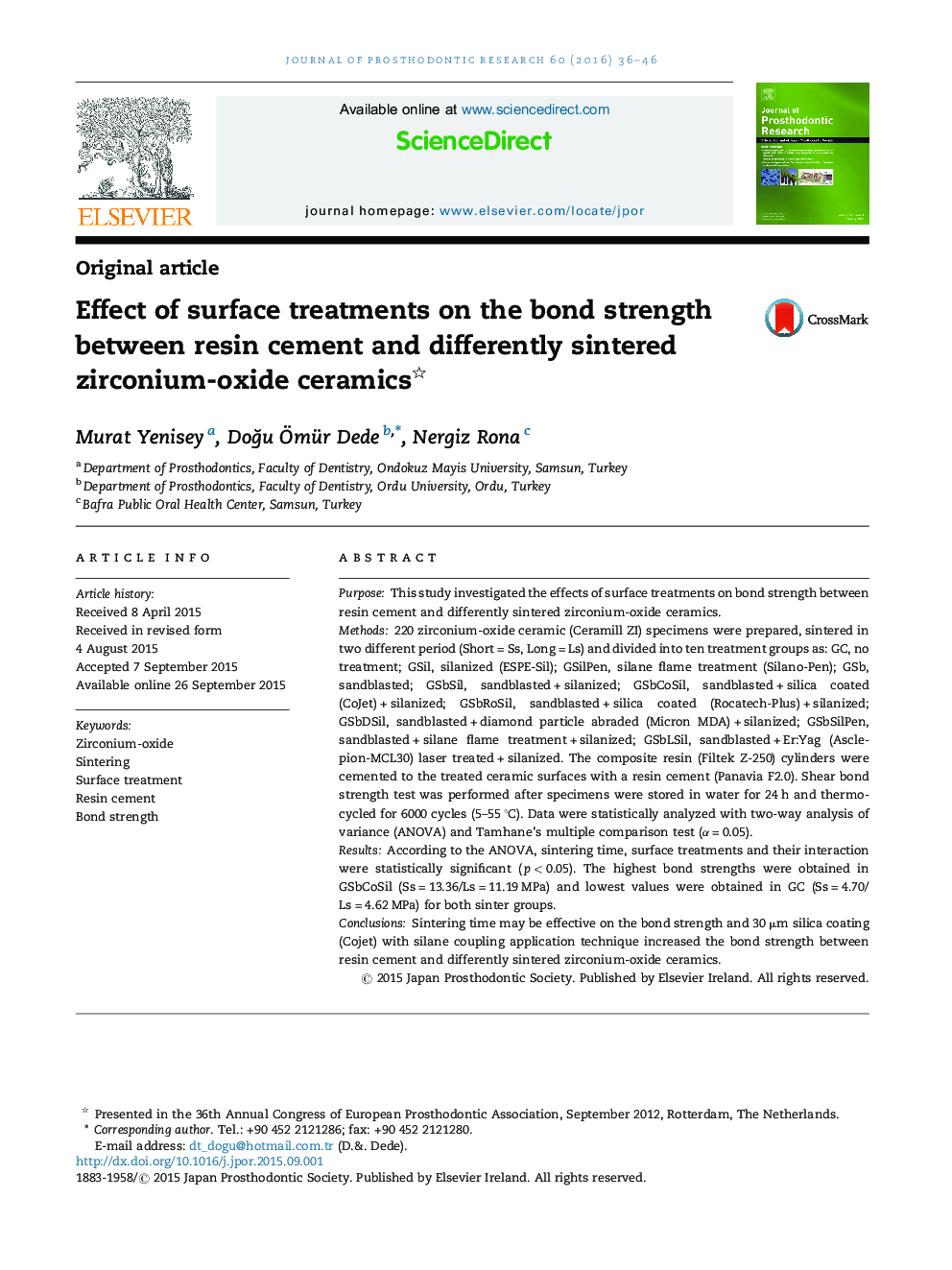| Article ID | Journal | Published Year | Pages | File Type |
|---|---|---|---|---|
| 3160628 | Journal of Prosthodontic Research | 2016 | 11 Pages |
PurposeThis study investigated the effects of surface treatments on bond strength between resin cement and differently sintered zirconium-oxide ceramics.Methods220 zirconium-oxide ceramic (Ceramill ZI) specimens were prepared, sintered in two different period (Short = Ss, Long = Ls) and divided into ten treatment groups as: GC, no treatment; GSil, silanized (ESPE-Sil); GSilPen, silane flame treatment (Silano-Pen); GSb, sandblasted; GSbSil, sandblasted + silanized; GSbCoSil, sandblasted + silica coated (CoJet) + silanized; GSbRoSil, sandblasted + silica coated (Rocatech-Plus) + silanized; GSbDSil, sandblasted + diamond particle abraded (Micron MDA) + silanized; GSbSilPen, sandblasted + silane flame treatment + silanized; GSbLSil, sandblasted + Er:Yag (Asclepion-MCL30) laser treated + silanized. The composite resin (Filtek Z-250) cylinders were cemented to the treated ceramic surfaces with a resin cement (Panavia F2.0). Shear bond strength test was performed after specimens were stored in water for 24 h and thermo-cycled for 6000 cycles (5–55 °C). Data were statistically analyzed with two-way analysis of variance (ANOVA) and Tamhane's multiple comparison test (α = 0.05).ResultsAccording to the ANOVA, sintering time, surface treatments and their interaction were statistically significant (p < 0.05). The highest bond strengths were obtained in GSbCoSil (Ss = 13.36/Ls = 11.19 MPa) and lowest values were obtained in GC (Ss = 4.70/Ls = 4.62 MPa) for both sinter groups.ConclusionsSintering time may be effective on the bond strength and 30 μm silica coating (Cojet) with silane coupling application technique increased the bond strength between resin cement and differently sintered zirconium-oxide ceramics.
